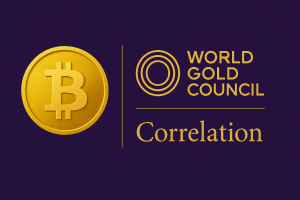| Attribute | Details |
|---|---|
| Founder | World Gold Council |
| Year Established | 2025 |
| Category | Traditional Finance / DeFi |
| Description | The use of blockchain technology by the WGC (World Gold Council), a traditional and well-established organization, brings more legitimacy and acceptance to the crypto ecosystem. |
Introduction
Gold stands out as a key asset in central banks’ reserve strategies due to its security, liquidity and yield characteristics. For this reason, the World Gold Council (WGC) accounts for approximately 1/5 of all gold mined throughout history. This shows the importance of gold in the international financial system. To help understand the state of the gold market, gold reserve data are published using statistics from the International Monetary Fund (IMF) and International Financial Statistics (IFS), which track the reported purchases and sales of central banks (and other official institutions where appropriate) with gold as a percentage of their international reserves.
In recent years, the concept of digital gold reserves has come to the fore. Digital gold refers to the representation of physical gold as digital assets through blockchain-based technologies. While the Central Bank of the Republic of Turkey maintains traditional gold reserves, some private initiatives (e.g. Tether Gold – XAUT) supplement physical gold reserves with digital tokens and offer investors the opportunity to store gold safely in a digital environment. Similarly, some policy proposals in the US (e.g., the BITCOIN Act) raise the issue of integrating traditional reserves into digital currency systems. In this context, digital gold projects not only preserve the link to physical gold but also introduce a new understanding of reserve management with the advantages of accessibility and transparency offered by digital financial instruments.
What Does the Digital Gold Strategy Aim to Achieve?
Turkey’s gold reserves averaged 271.61 tons in the 2000-2025 period. In the second quarter of 2025, reserves reached a historical high of 634.76 tons, while they hit a low of 116.04 tons in the first quarter of 2001.
On September 3, the World Gold Council (WGC) announced that London is working on a new “digital gold” format that could transform the nearly $900 billion gold market. This initiative is also associated with the Gold Bar Integrity (GBI) Program, which is run in conjunction with the London Bullion Market Association (LBMA). This program aims to ensure the traceability and verification of gold bars throughout the supply chain using blockchain and database technologies, thereby increasing trust and transparency in the market.
In the US, a different parallel development is taking place. H.R. 5166, a bill introduced in Congress, would require the Treasury Department to establish a “strategic reserve custody and management plan” for Bitcoin held by the federal government. This bill is considered to be the first concrete step towards the US incorporating Bitcoin into its national reserve strategy.
The current gold market has various limitations due to the slow and costly physical settlement and custody processes. In this context, a digital gold format could allow for faster, cost-efficient and transparent transactions. At the same time, tokenization (digital representation) of gold, whereby each digital asset is backed by a certain amount of physical gold, will provide additional security and transparency to investors. This new approach could make gold more accessible and attractive, especially to younger generations and crypto investors interested in digital assets.
Digital gold has the potential to provide an alternative to digital store of value instruments such as Bitcoin. While the adoption of blockchain technology by the World Gold Council, a traditional institutional body, has increased the legitimacy of the crypto ecosystem, the relationship between gold and Bitcoin could become stronger if digital gold applications become widespread. Such a scenario could lead to a similar positioning of both assets as hedges against inflation.
”World Gold Reserve” Named Image to be Added
Impact on the Crypto Market
HR 5166, a bill introduced in the US Congress, is considered as a possible turning point in the country’s approach towards Bitcoin. The bill obliges the US Treasury Department to prepare a “strategic reserve custody and management plan” for Bitcoin, thus paving the way for Bitcoin to be positioned as a legally recognized and potential national reserve asset. This plan aims to establish an institutional framework on how to protect and manage Bitcoin held by the government, and is seen as a strategic step to ensure that the US does not fall behind in global financial competition.
This approach, which adopts a proactive policy instead of remaining passive in the face of Bitcoin’s rising position on a global scale, shows the US’s willingness to integrate innovative assets more strongly in its financial system. As one of the world’s largest economies, the US’s inclusion of Bitcoin in its official reserve strategy is an important signal not only for domestic markets but also for other countries and large-scale institutional investors. The implementation of a strategic reserve plan could lead to large-scale Bitcoin purchases at the state level. For Bitcoin, which has a limited supply, such a development could increase demand and cause prices to rise to historic levels. Moreover, the legalization of Bitcoin may strengthen the confidence in Bitcoin, and volatility (price fluctuations) may decrease over time as long-term investors join the market.
On the other hand, recent data released by the London Bullion Market Association (LBMA) point to remarkable developments in the precious metals market. Despite the decline in gold stocks at the Bank of England, the amount of gold held in commercial vaults in London increased. This indicates that gold is moving out of the Bank of England and into the Loco London system. It also indicates that the market pressures that led gold to shift to New York in recent months have partially eased. A similar trend was observed in the silver market. Silver outflows from London to the US fell by 4.5% in February to 22,462 tons, valued at $22.5 billion. This is the lowest level since mid-2016. In January, silver assets decreased by 8.6%.
Conclusion
Recent developments regarding gold and Bitcoin point to the transformation of reserve management in the global financial system. While the US bill HR 5166 raises the possibility of positioning Bitcoin as a strategic reserve asset, the digital gold projects of the World Gold Council and the LBMA bring traditional store of value instruments into a new blockchain-based framework. These developments suggest that both gold and Bitcoin may assume converging functions around the identity of “digital store of value”.
On the other hand, data from the London Bullion Market Association (LBMA) reveal that supply and liquidity pressures have increased in the physical gold market. As of February, the amount of gold held in London vaults fell by 0.7% to 8,477 tons, the lowest level in five years, and the value of these stocks was recorded as USD 772.5 billion. Taken together with the 1.7% decline in the previous month, this suggests that the OTC gold market in London is contracting. The diversion of US supply from London, Switzerland and other centers has reduced liquidity in the London market, which has increased competition among market players to borrow bullion from Bank of England vaults.
This shows that while gold is experiencing supply pressure in the physical market, it is trying to become a more accessible and transparent asset through digital formats. Therefore, in the coming period, both gold and Bitcoin will play increasingly critical roles in strategic reserve management for governments and investors.






